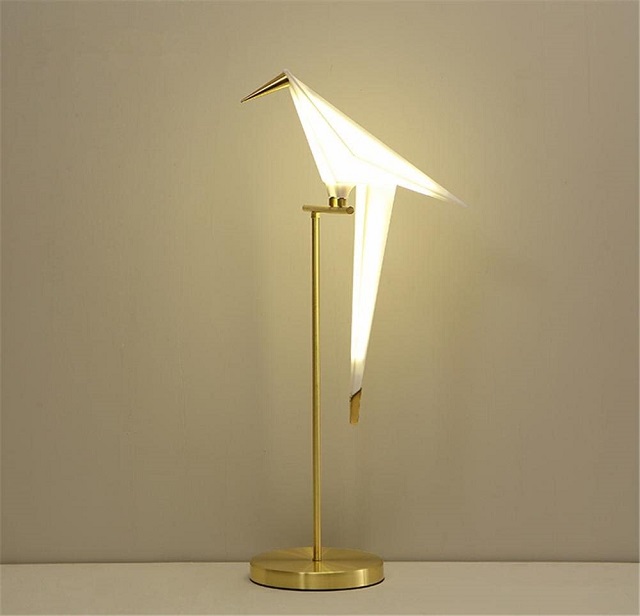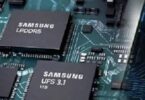Thomas Edison and Joseph Swan invented their first practical lamp in the 19th century. Since then, people have experienced massive improvements in various types of lamps and their applications. There are different kinds of lights around. Besides, manufacturers designed them with a conceived image in mind. Most bulbs are found in the lighting systems of homes, offices, factories, electrical devices, etc. In this case, how a light fixture performs depends on the bulb. Various light bulbs create different lighting effects.
What is a Lamp?
It is a light source with an element for light-emitting in a tube or outer bulb used to make radiation in the visible spectrum. Remember that we use the ‘bulb’ term to represent a lamp. It is actually an external glass part found with the light source.
Various Types of Lamps and Their Applications:
Different types of lamps are present in the market. They are categorized based on material, operating principle & energy efficiency. The light bulbs are as follows:
Incandescent bulbs:
It is an electric light source that works through incandescence. Therefore, light emission occurs via filament heating.
You can get them available in various wattages, voltages & sizes. Thomas Edison is the inventor of the original electric lighting. Usually, these consist of glass, including a tungsten filament. As soon as the current supplies via this filament, it will get heat. Thus, it can produce light.
These come with a glass mount or stem attached to the bulb’s base. In addition, the tiny wires support the filament and the cables. Remember that the cost to create the bulbs is low. Moreover, it is suitable for AC or DC. Therefore, people use them in both commercial and household lighting.
Tungsten Halogen Bulbs:
It is known as quartz iodine & quartz-halogen. This incandescent bulb has a tungsten filament within a solid transparent cover. Besides, it is a mix of a halogen & an inert gas such as bromine or iodine. In this case, a chemical reaction forms between the blend of the filament & the halogen gas. After that, the halogen cycle helps to redeposit the dissolved tungsten over the filament, resulting in the life and maintenance of the envelope increase. In addition, it allows the bulb filament to work at a maximum temperature than a typical incandescent light bulb.
Its size enables you to use it in solid optical systems for illumination & projectors. In addition, you can add the small glass cover in a high external glass bulb. The bulb can hold less temperature to protect the inside bulb from contagion. As a result, it gets changed mechanically like a regular bulb. Halogen incandescent & standard bulbs are less efficient than fluorescent and LED.
Fluorescent Bulbs:
It is a mercury-vapor bulb that discharges gas at less pressure. Besides, the bulb uses fluorescence to create visible light. As soon as you supply the electric current, the gas will excite the mercury vapor to make short-wave UV light. After that, it will cause a phosphor coating to blink. Its major function is changing the energy from electrical to incandescent bulbs.
The average luminous efficiency ranges from 50 to 100 lumens/watt. On the other hand, 16 lumens/watt is the luminous efficiency of an incandescent. Remember that fluorescent fixtures are costly because they require a weight to control the current throughout the bulb. In addition, the lower energy price can balance the higher initial cost. Recently, you can get compact fluorescent bulbs in similar sizes in the market. People use incandescent bulbs to conserve energy in homes for their purpose.
Compact Fluorescent Bulbs:
It is a fluorescent bulb designed to interchange halogen or incandescent lamps. You can get them available in two kinds, including screw-in & plug-in.
People call them integrated & non-integrated also. You should know that you can get them available in various sizes, wattages, base types, and color temperatures. Their low cost, efficiency, long life, etc., makes them unique. Besides, these are equal to linear fluorescent bulbs. The reason is that these are gas discharge-based bulbs. In addition, these use electricity to stimulate mercury vapor in the glass cover. The technique used in this case is known as inelastic scattering. Moreover, the envelope includes noble gas and phosphors.
Due to their improvements, these have become an excellent alternative for both residential & commercial applications. Screw-in CFLs are the perfect replacement for simple upgrading. Therefore, if willing, you can remove the old bulb to rotate it in the CFL. Plug-in CFLs require ballast & a specific socket.
Mercury-Vapor Bulbs:
A gas discharge bulb uses an electric arc throughout vaporized mercury to produce light. In addition, it limits the arc discharge to a small fused quartz arc pipe. Ensure that you should place the pipe in a larger borosilicate glass bulb.
You find these more energy efficient than incandescent. Its lifespan is twenty-four hours. Besides, these have high intensity and can provide clear white light as output. That is why you should use these light bulbs in large overhead lighting within warehouses, sports arenas, streetlights, factories, etc.
Metal Halide Bulbs:
We know a metal halide bulb as an MH bulb also. It is a different type of lamp. This one is a high-intensity discharge bulb meaning it can produce its light with the help of an electric arc in a small discharge tube. MH bulbs are becoming popular for their light quality and efficiency. Besides, people use these mostly in sports fields, stadiums, parking lots & street lights in urban places.
HPS, mercury vapor, LPS, halogen & LEDs are the competitors of the bulbs. Besides, these can provide more benefits in various applications. But the bulbs are expensive and cause light pollution. These are the drawbacks of metal halide bulbs.
High-Pressure Sodium Vapour Bulbs:
It is an electric discharge bulb containing ionized sodium. People use them, especially in street lighting & other lighting. As soon as you supply current between the two electrodes, it starts ionizing the argon & neon. Hence, it tries to offer a red glow till the hot gas evaporates the sodium. After that, the sodium ionizes & shines monochrome yellow.
These bulbs come with a discharge tube made up of translucent alumina. It can resist the acidic effects of the mix of mercury & sodium at high temperatures & pressure. Besides, these can give a whiter light. It is beneficial in public places like tunnels, road intersections, and sports stadiums where you need additional bright lighting. In addition, you can get an entire range of reflected colors.
Low-Pressure Sodium Vapour Lamps:
LPS bulbs contain an internal discharge tube consisting of borosilicate glass. Hence, you need to arrange the glass through metal electrodes. After that, you should use small metallic sodium to fill with argon & neon gas. Ensure that you need to use them in street lights for efficiency. Besides, it can offer yellow color light, which can quickly go through fog.
These can possess a few HID bulb characteristics. However, it seems like fluorescent bulbs in other cases. These are not so costly that you use them on the road & security lighting where object color is not significant. Most people use them in foggy weather conditions.
LED Light Bulbs:
These are electric lights that create light through LEDs. Besides, the bulbs are more energy-efficient than incandescent & fluorescent bulbs. In addition, the bulbs are commercially available & very much efficient as these provide 200 lumens for every watt.
The lifespan of these bulbs are more than incandescent ones. You can see the LED bulbs working through a LED driver circuit to function from power lines. In this case, the LED driver circuit requires a few unique characteristics. It supports lamp dimmers used on incandescent bulbs.
A few LED bulbs work as alternatives to fluorescent/ incandescent ones. In addition, these use many LED packages to boost light diffusion, overall cost & heat dissipation. Besides, the transcript on the packaging of the retail LED can illustrate light output in lumens. Moreover, it can demonstrate the use of power in watts and the temperature of color in Kelvin. It may illustrate a color depiction like daylight, cool white, or warm white. The temperature range offers the same output within lumens.
Desk Bulbs/Table Lamps:
You should arrange it on a table or desk. It allows you to provide targeted light to achieve reading, computer work, writing, crafting, drafting, bookkeeping, sewing, painting & knitting. Besides, the bulbs offer adaptable illumination to ensure you can view the task. In addition, it should provide ergonomic comfort. Swing arm, adjustable, battery-operated outlets, organizer lamp, magnifying, clip-on desk, etc., are examples of a few various desk bulbs.
Wall Bulbs:
The name suggests that you need to place it on a wall. But to categorize these, you must do this based on the requirement. Generally, designers and manufacturers club the wall bulbs & sconces together. Hence, metal, glass, ceramic, plastic & crystal are the materials that manufacturers use to produce them. Various wall bulbs exist, including up light, downlight, candle, swing arm, picture lights, signs, wall washers & lantern wall bulbs.
You should use them, especially in rooms, indoors, etc. If you use them beside ceiling lights, they can provide supplemental illumination. While using wall bulbs rather than overhead lighting can produce an extra atmospheric effect.
Street Bulbs:
These are standard light sources. You can use them on the edge of a path, road, or railway platform. Photocells with light sensitivity are examples of street bulbs. It can turn the bulb active mechanically once required. Generally, the street light systems have a connection underground, not a wiring connection from one utility position to another. These are a major source of community safety lighting to decrease crime.
Various types of street lights are metal halide, HPS or high-pressure sodium, LPS or low-pressure sodium, LED or light-emitting diodes, PCA or phosphor-converted amber & NBA, or narrow-band amber street lights.
Conclusion:
You should know that a bulb is an artificial light source. These have been a crucial part of our daily life for the last hundred years. You can use any kind of bulb available in the market. Hence, you only need to choose the one you need from different types of lamps and their applications.
Frequently Asked Questions:
- What do you mean by a lamp and its function?
A lamp is a device used to create illumination.
- What are the three types of lamps?
Incandescent, halogen, and CFL are the three basic types of lamps.
- What is a lamp in electrical?
Technically, it is a replaceable component generating light from electricity. We know thee as light bulbs also. These consist of ceramic, metal, glass, or plastic securing the light bulb in the socket of a light fixture.







